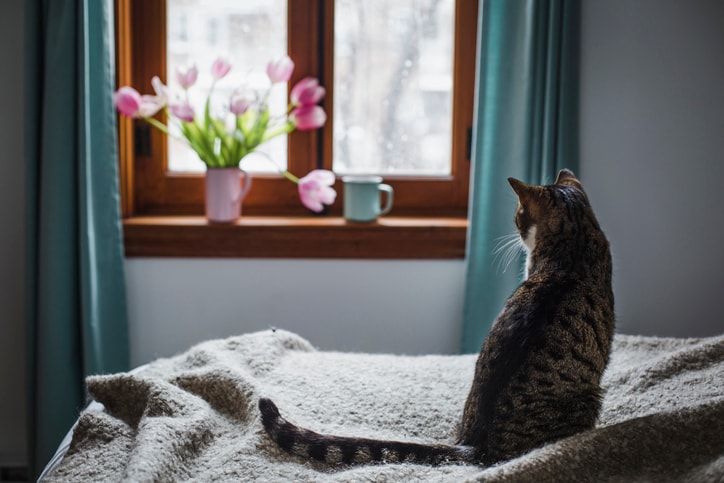Even though pretty much everything cats do is adorable, their curious behavior can get them into serious trouble. It might be cute when a kitty starts batting at the leaves of a potted plant or tries to munch on a shrub in the garden, for example, but pet owners need to be aware of the unfortunate truth: Many common plants and flowers are poisonous to cats, which can pose a bit of a problem for feline lovers who like to grow things. Ingestion of these toxins can cause anything from vomiting and liver damage to death in cats.
“Prevention is the best way to avoid incidents of plant ingestion,” says veterinarian Dr. Sara Ochoa of Louisiana City, Missouri, co-founder of How to Pets. Whether you’re adding plants to your yard or somewhere in the house, Ochoa recommends aiming for plants and flowers that are cat-safe. “Some cat-friendly plants include spider plants, certain types of ferns and catnip. Always check the toxicity before buying any plant,” she says.
Any cat owner (especially one who also owns plants) should be aware of common signs of poisoning, which include vomiting, diarrhea, drooling, loss of appetite or any unusual behavior, says Ochoa.
The following plants and flowers are poisonous to cats. It’s a good idea to educate yourself on which buds and blooms may hurt your pet so you can avoid growing them in your cat’s living space.
What flowers are poisonous to cats
1. Sago palm
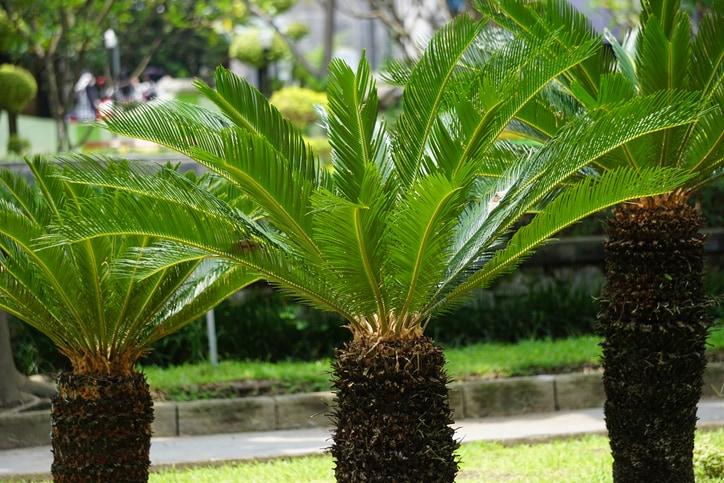
Is sago palm toxic to cats? “Popular in warmer climates, the sago palm is extremely toxic to cats,” says Ochoa. “All parts of the plant are poisonous, but the seeds (or ‘nuts’) are the most lethal. Consumption can lead to vomiting, diarrhea and, if untreated, can even be fatal.”
2. Cannabis sativa
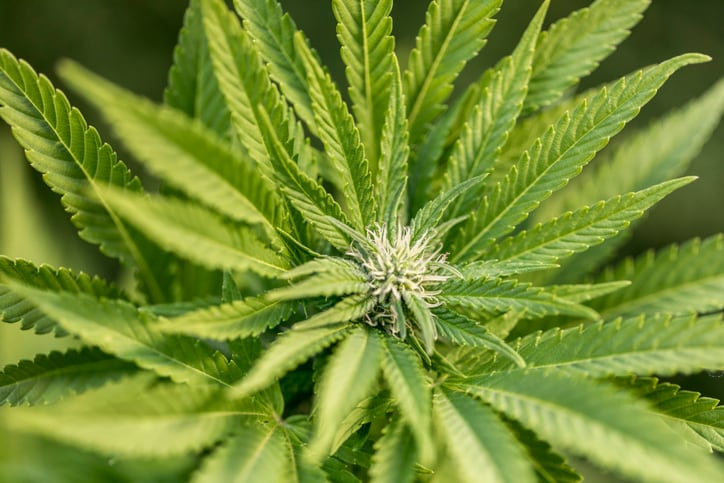
Cannabis might serve as a sort of catnip for some humans, but marijuana is definitely not a safe substance for your feline.
“Ingesting cannabis can cause a range of symptoms in cats, including lethargy, disorientation, drooling, vomiting and urinary incontinence,” says Dr. Jennifer Power, senior veterinarian at Small Door Vet in Boston. “Although it is generally not life-threatening, it’s still important to seek veterinary advice if your cat has ingested cannabis, especially if you are unsure about the amount or type consumed.”
3. Dieffenbachia (Dumb Cane)
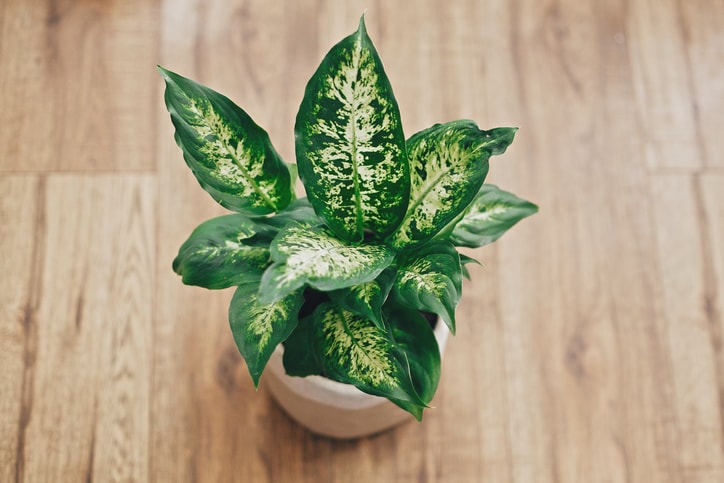
“A common indoor plant, the dieffenbachia can cause oral irritation, excessive drooling, difficulty swallowing and vomiting in cats upon ingestion,” says Ochoa.
4. Heartleaf philodendron
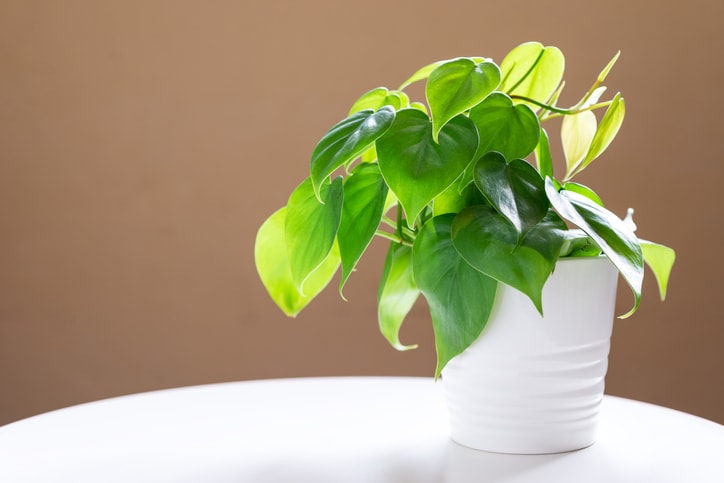
You’ve no doubt seen potted philodendrons in many offices and living rooms.
Is heartleaf philodendron poisonous to cats? “Philodendrons contain insoluble calcium oxalate crystals, which can cause oral irritation, excessive drooling, difficulty swallowing, and in severe cases, vomiting and diarrhea,” says Power. “In most cases, these symptoms are mild and self-limiting.”
5. Aloe vera
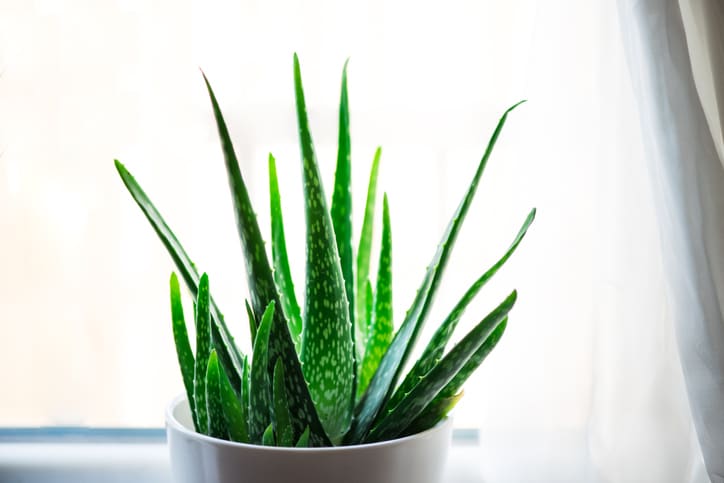
You might keep an aloe vera plant on hand because the gel from the plant’s leaves can be used to treat burns and other skin irritations, but its health benefits only extend to humans.
So is aloe vera poisonous to cats? “Aloe vera can cause gastrointestinal upset in cats, including vomiting and diarrhea,” says Power. “The symptoms are usually mild and subside on their own, but it’s still important to monitor your cat for any signs of distress.”
6. Yew
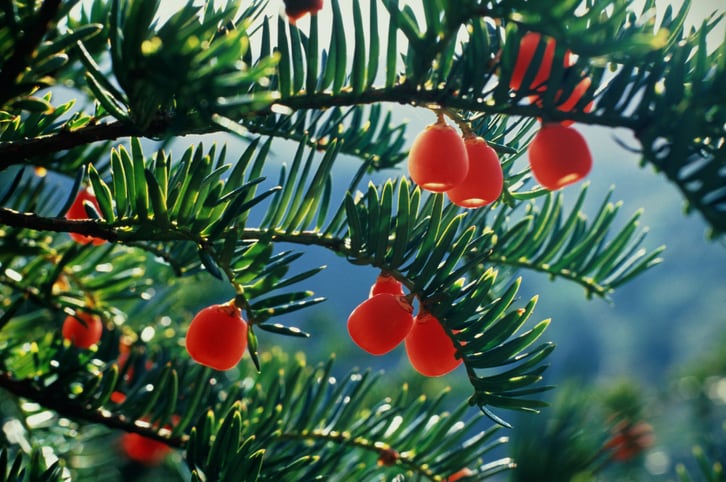
This green shrub with red berries may be planted in many yards, but it’s “highly toxic to cats and can lead to rapid onset of symptoms such as vomiting, diarrhea, tremors, seizures, difficulty breathing and even death,” says Power. “Immediate veterinary attention is crucial if ingestion is suspected.”
7. Rhubarb leaves
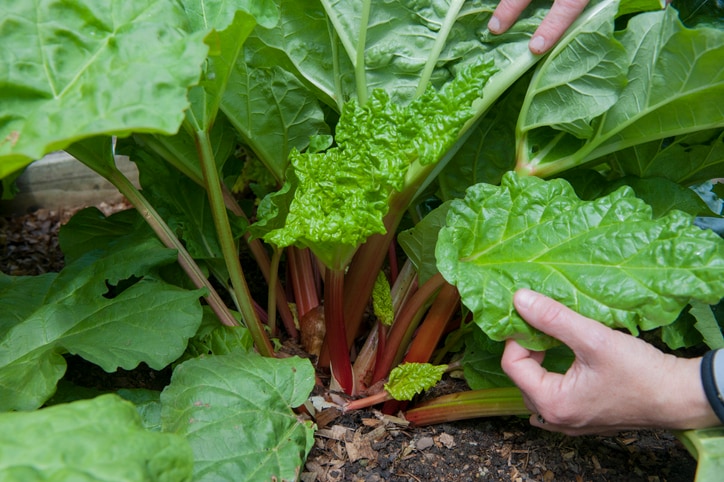
If you grow rhubarb in your garden (perhaps to bake into strawberry rhubarb pies), make sure to keep your kitty away from the plant. “Rhubarb leaves contain oxalates and can lead to gastrointestinal upset, drooling and potentially kidney damage in cats if ingested in large amounts,” says Power.
8. Chinese evergreen
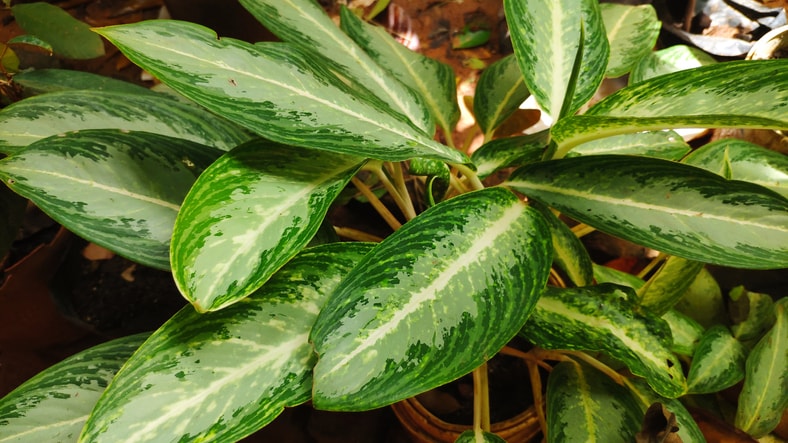
With its attractive variegated leaves, the Chinese evergreen is a popular potted plant, but you’d be better off with a safer substitute.
“Ingesting Chinese evergreen may cause mild oral irritation, drooling and gastrointestinal upset in cats,” says Power.
What flowers are poisonous to cats?
1. Lily
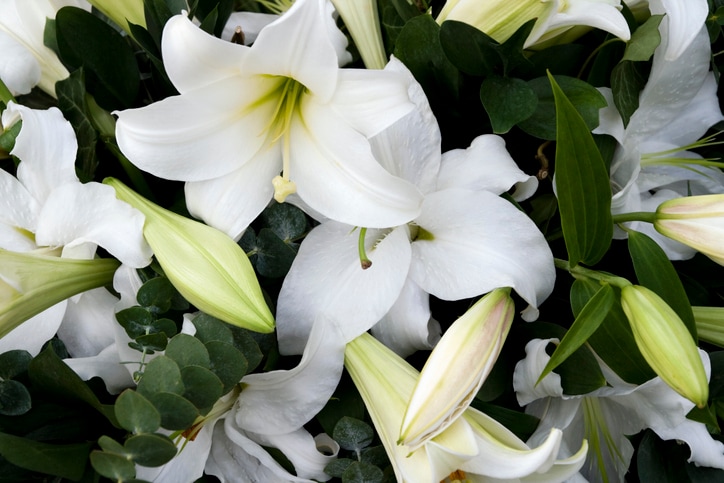
Are lilies poisonous to cats? “An absolute beauty in gardens and floral arrangements, lilies are unfortunately among the most toxic plants for cats,” says Ochoa. “Ingesting even a small amount can lead to severe kidney damage.”
2. Rhododendron
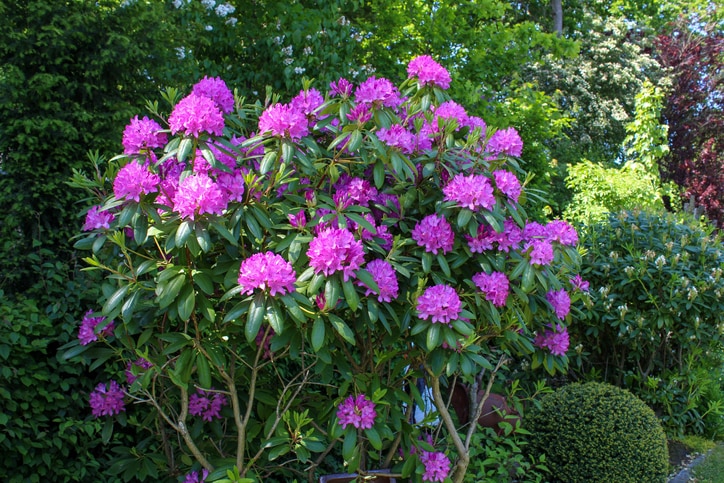
Are rhododendrons poisonous to cats? “Typically found in outdoor landscapes, rhododendron is another plant that cat owners need to be wary of,” says Ochoa. “It contains toxins that can cause vomiting, diarrhea and drooling and ultimately could lead to coma or even death in cats.”
3. Azalea
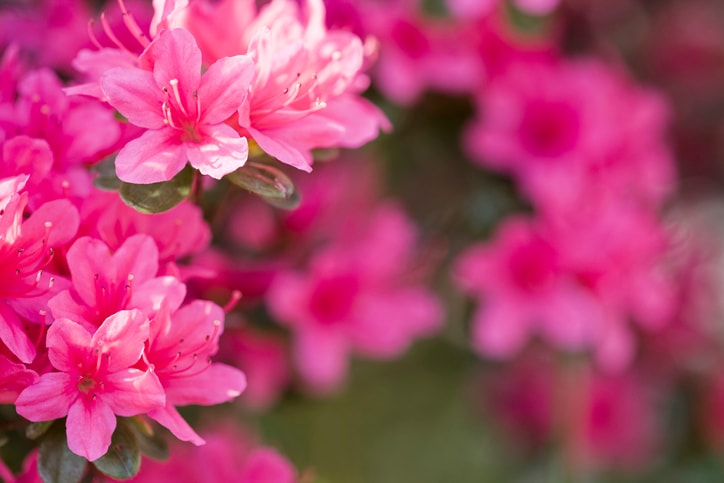
Is azalea poisonous to cats? The azalea is closely related to the rhododendron, says Ochoa, and is equally hazardous to cats. Ingesting the leaves can lead to intestinal upset, abnormal heart rate and seizures.
4. Oleander
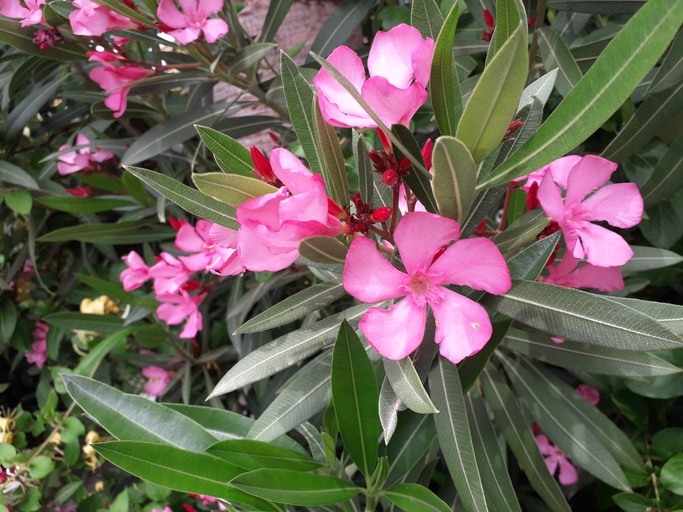
“A beautiful ornamental shrub, oleanders are very toxic to cats,” says Ochoa. “Ingestion can cause bloody diarrhea, colic and serious cardiac abnormalities, such as irregular heart rhythm.”
5. Autumn crocus
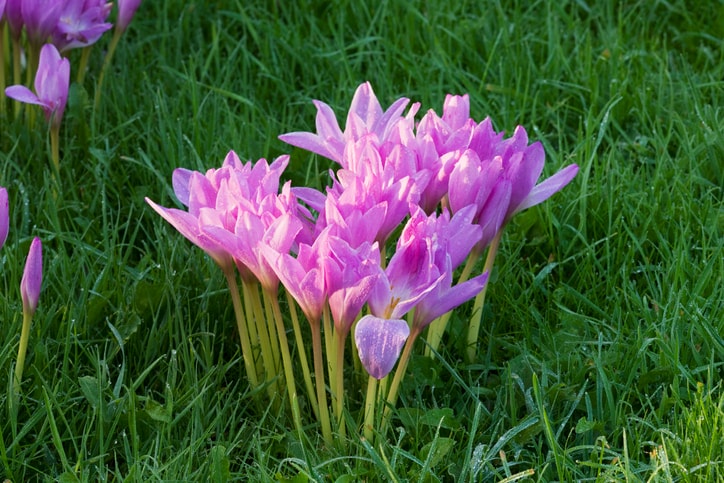
This flower contains colchicine, Ochoa explains, a highly toxic alkaloid to cats that can cause severe vomiting, diarrhea and organ damage if ingested.
6. Daffodil
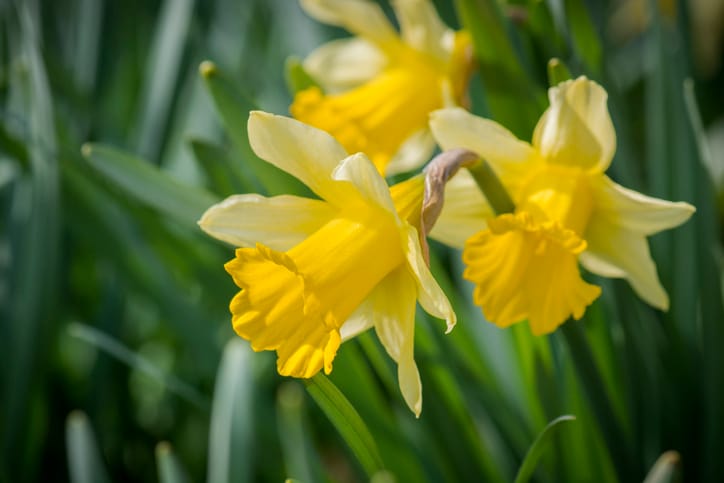
Are daffodils poisonous to cats? “Daffodil, another popular garden plant, is harmful to cats, particularly its bulbs,” says Ochoa. “Consuming daffodil can cause drooling, vomiting, diarrhea and, in severe cases, heart problems and breathlessness.”
7. Tulip
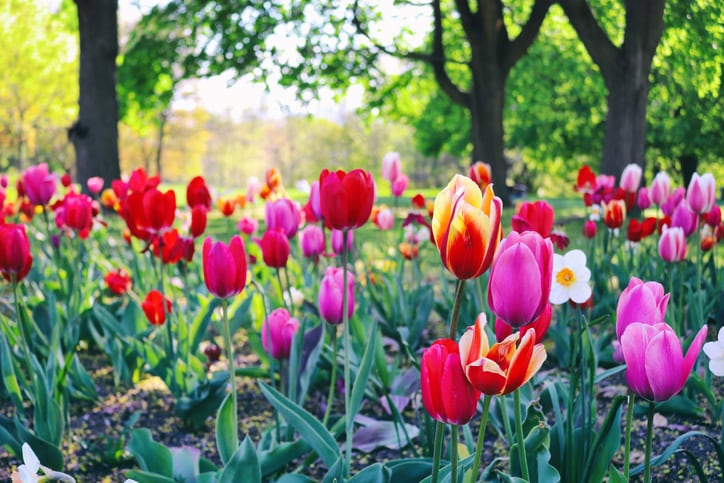
Are tulips poisonous to cats? The bulbs are the most poisonous part of this popular, colorful flower, according to Ochoa. Ingestion can cause oral irritation, excessive drooling and nausea.
8. Hyacinth
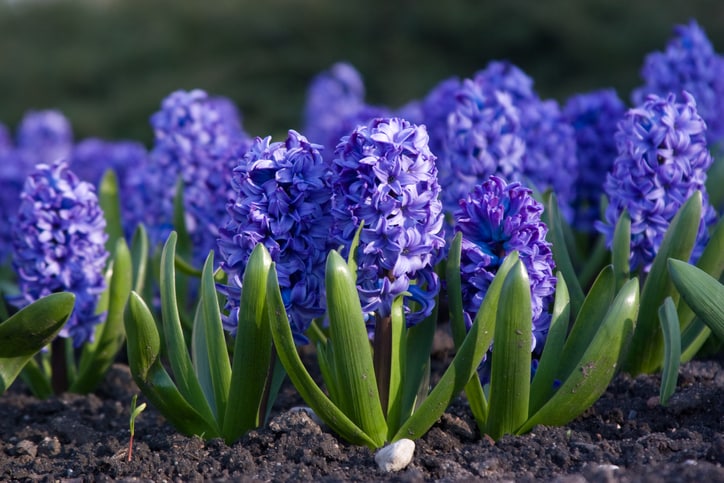
Are hyacinths poisonous to cats? This beautiful bloom is a sign of springtime, but as with tulips, the bulbs are very poisonous to cats, according to Power. Eating this plant can result in vomiting, diarrhea, drooling, and in severe cases, heart arrhythmias or tremors. “Immediate veterinary care is essential if your cat has ingested any part of the hyacinth plant,” says Power.
When do you need to call a professional?
“When a feline companion unknowingly ingests a toxic plant or flower, there are a few important steps the pet owner should take,” says Ochoa.
- First, do not delay. “Acting swiftly can make a significant difference in their beloved cat’s health,” says Ochoa. Call your vet immediately.
- Next, try to identify the plant or flower your cat consumed. “Recognizing the species of the plant provides valuable information to the veterinarian and can significantly help in directing the appropriate treatment, says Ochoa. You can even send your vet a photo of the plant or bring the plant with you if they want to see your cat in person.
- Monitor your cat for signs of distress or discomfort. “Even if the cat appears fine after ingestion, some plant toxins can cause delayed symptoms,” says Ochoa.
- In addition to any information you have about the plant, let your vet know when it was ingested and if your cat is showing any signs of poisoning.
What is the treatment for cat poisoning?
How a vet will treat your cat depends on several factors, including the specific plant ingested and the observed symptoms, according to New Orleans-based veterinarian Dr. Kevin Puzycki, who’s also the spokesperson for Solid Gold pet food.
Treatment options your vet may provide can vary widely and may include:
- Inducing vomiting.
- Administering activated charcoal to aid in toxin absorption.
- Providing overnight or outpatient care, which may include intravenous fluids and anti-nausea injections.
“In cases where plant ingestion results in mild gastrointestinal discomfort,” Puzycki adds, “veterinarians may opt to prescribe certain medications and supplements to alleviate symptoms such as nausea, loose stool or diarrhea.”
While it’s always advisable to contact your vet as a first step, according to Power, your pet’s doctor might also refer you to Animal Poison Control Center for additional guidance, particularly if it’s after hours or the situation is serious. “Animal Poison Control can provide specialized toxicology information and assist veterinarians in treating cases of plant toxicity in pets,” she says.
24/7 Pet Poison Control
- ASPCA Animal Poison Control Center (APCC): 888-426-4435
- Pet Poison Helpline: 855-764-7661
How can you prevent your cat from ingesting a toxic plant or flower?
It’s possible to own a cat and plants at the same time as long as you’re careful. Before buying any plant or flower, Puzycki recommends checking a comprehensive list of toxic and nontoxic plants like the one provided by the ASPCA. There are many safe options, including Boston ferns, areca palm and others.
“If there are areas in your home or yard that your cat cannot access, you can consider placing questionable or toxic plants there, such as in outdoor spaces, especially if your cat is strictly an indoor pet,” he says. “Additionally, for plants that are out of reach, I advise hanging them in high places, ensuring there’s no way for a cat to reach them by jumping or any other means.”
With some planning and research, it’s definitely possible to keep your cat protected from poisonous plants and flowers. And it’s always better to be safe than sorry!
